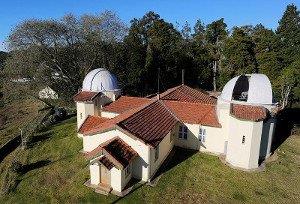
Kodaikanal Observatory's Century-Long Data Can Help Predict Solar Storms
Led by Dibya Kirti Mishra of ARIES, its researchers, along with those from the Indian Institute of Space Science and Technology, the US' Southwest Research Institute, Germany's Max Planck Institute for Solar System Research, and INAF Osservatorio Astronomico di Roma, estimated the polar field of the Sun over the last century.
"Understanding the Sun's magnetic behaviour helps scientists predict solar storms, which can damage satellites, disrupt GPS, and even knock out power grids," the Ministry of Science and Technology said.
The KoSO archive can be considered as a big data source for AI/ML applications, with over 100 years of observations now digitised into images, the Ministry explained.
By combining this data with more recent observations from Italy's Rome-PSPT, the research team used advanced feature identification algorithms to identify tiny bright features near the Sun's poles, called the polar network, which they used to estimate the solar polar field.
Researchers reported that the polar network is a powerful“proxy”, a stand-in for the polar field strength. The researchers even used this reconstruction to estimate the strength of the ongoing Solar Cycle 25.
At KoSO, solar astronomers began observing the Sun in a special wavelength called Ca II K as early as 1904. This wavelength captures chromospheric activity of the Sun.
The observations of this area, where bright patches called plages and networks form due to magnetic activity, have held the secret of solar magnetism for over a century.
KoSO in Bangalore is an autonomous institute under the Department of Science & Technology (DST), Government of India.
The full dataset, including the reconstructed polar field and Polar Network Index (PNI) series, is freely available to the public on GitHub and Zenodo.

Legal Disclaimer:
MENAFN provides the
information “as is” without warranty of any kind. We do not accept
any responsibility or liability for the accuracy, content, images,
videos, licenses, completeness, legality, or reliability of the information
contained in this article. If you have any complaints or copyright
issues related to this article, kindly contact the provider above.


















Comments
No comment